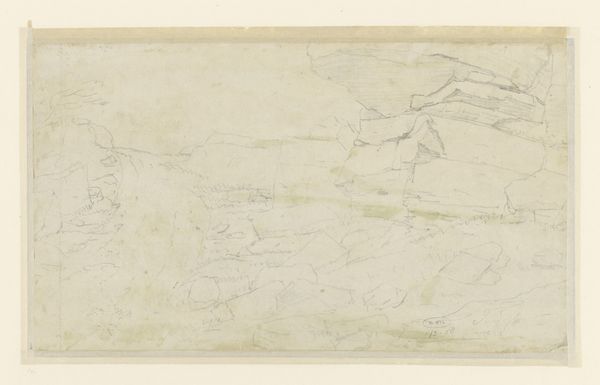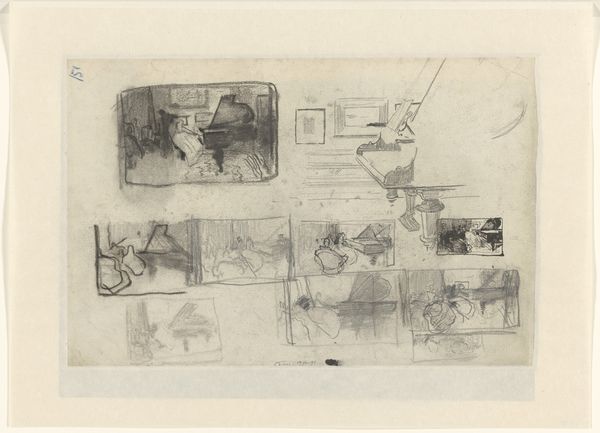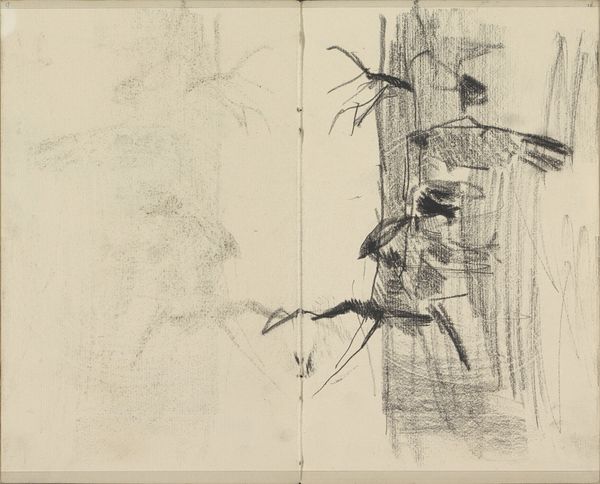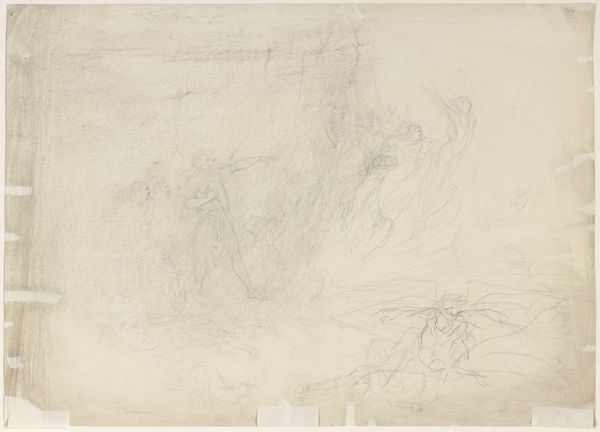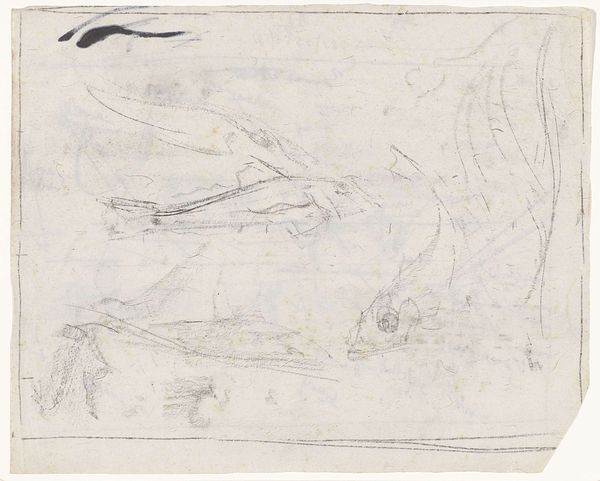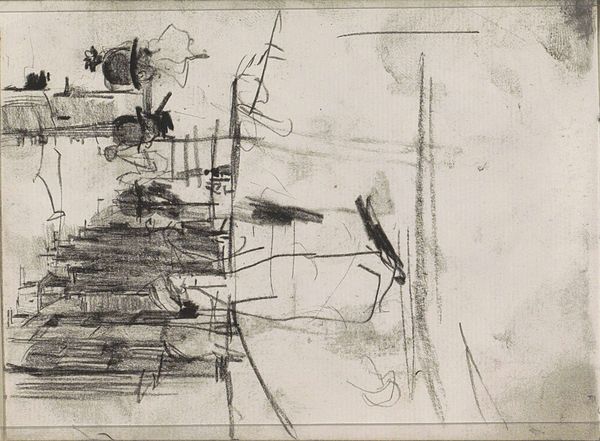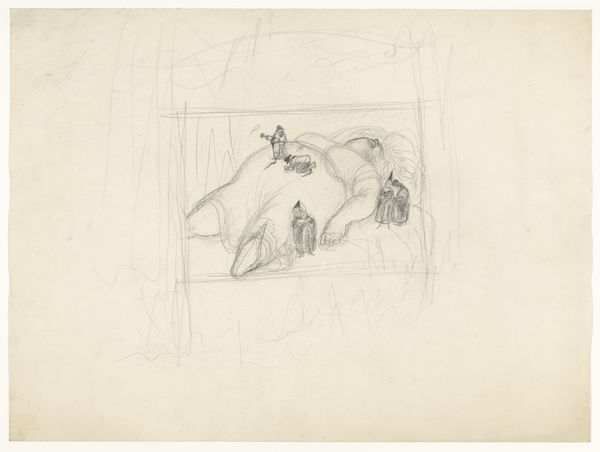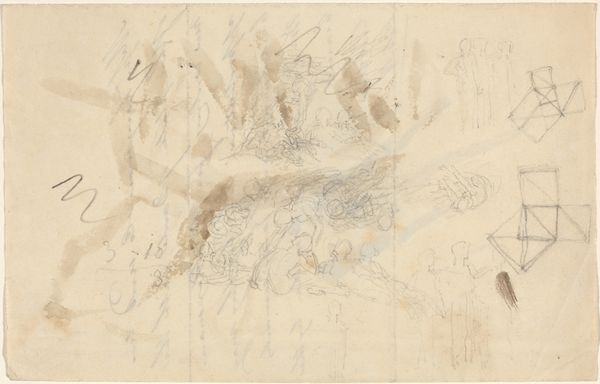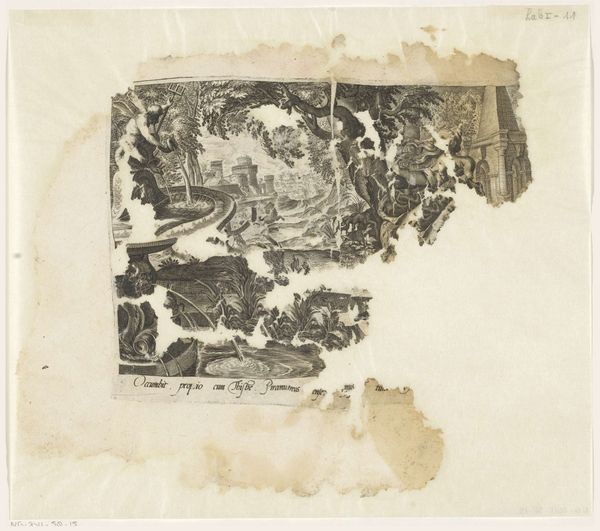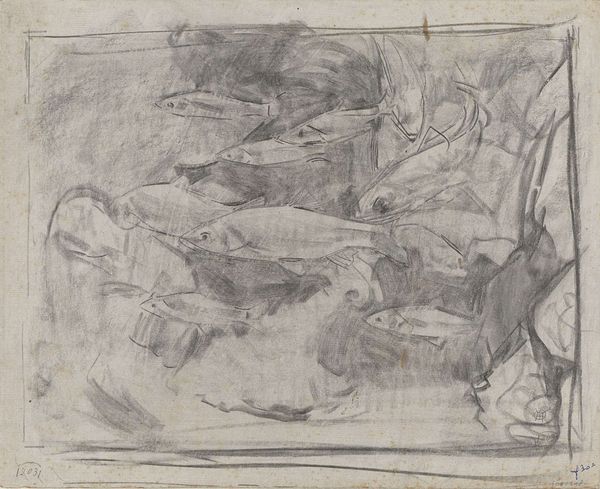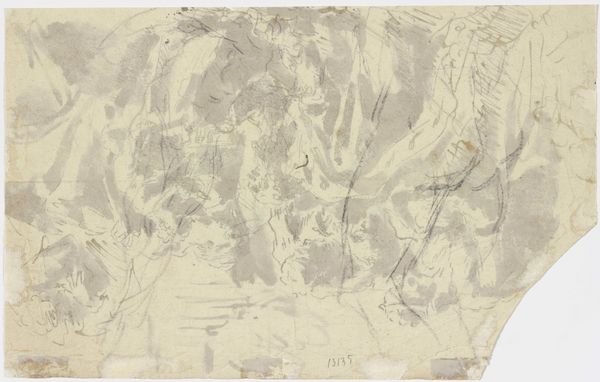
drawing, paper, ink, pencil
#
portrait
#
drawing
#
narrative-art
#
landscape
#
paper
#
ink
#
pencil
#
genre-painting
#
academic-art
#
watercolor
#
realism
Dimensions: height 222 mm, width 355 mm
Copyright: Rijks Museum: Open Domain
Curator: Here we have Matthijs Maris’s “The Pawnshop (Mount of Piety),” created around 1856 to 1857. It’s a work rendered in pencil and ink on paper and now held here at the Rijksmuseum. Editor: My immediate sense is of a half-formed reality. There's a stark contrast between the skeletal outlines of the crowd and that densely worked corner with the figure at the desk. It highlights the activity versus inactivity dynamic very strikingly. Curator: Maris was working during a period of increased industrialization and urbanization. Pawnshops, or "Mounts of Piety," were social safety nets of a kind, reflecting profound shifts in economic life for many Europeans, so they really become emblematic of an era. Editor: That sparse use of color around the figure at the desk and the solid forms next to them also makes me wonder about Maris’ process. Was he strategically layering different densities and types of materials to focus our gaze in one area? Was that to further emphasize that some areas are resolved and some are in transition? Curator: Undoubtedly. I believe this captures Maris’ engagement with Realism, showing daily life not for moralizing reasons necessarily, but just presenting a particular social truth. What I also see is how these images challenge and reflect institutional structures offering insights into power dynamics and even vulnerability within those structures. Editor: Absolutely. The very choice of the pawnshop as a subject matter points to how profoundly reliant the people were on institutions as they struggled to provide materials for themselves. In examining these representations, the question is, are they further critiquing this state, or, with such fine craft, simply trying to raise it into the public eye for debate? Curator: It brings to mind similar efforts by artists, illustrators, and writers during that era that brought social conditions and injustice to light and into discussion. And looking again, I realize it might serve both purposes. Editor: Agreed. Seeing that one little corner realized amongst so many sketches. Curator: Such an interesting conversation this piece elicits regarding society, politics, and the hand of the maker. Editor: A true convergence of the practical and the profound then, it sounds like.
Comments
No comments
Be the first to comment and join the conversation on the ultimate creative platform.
